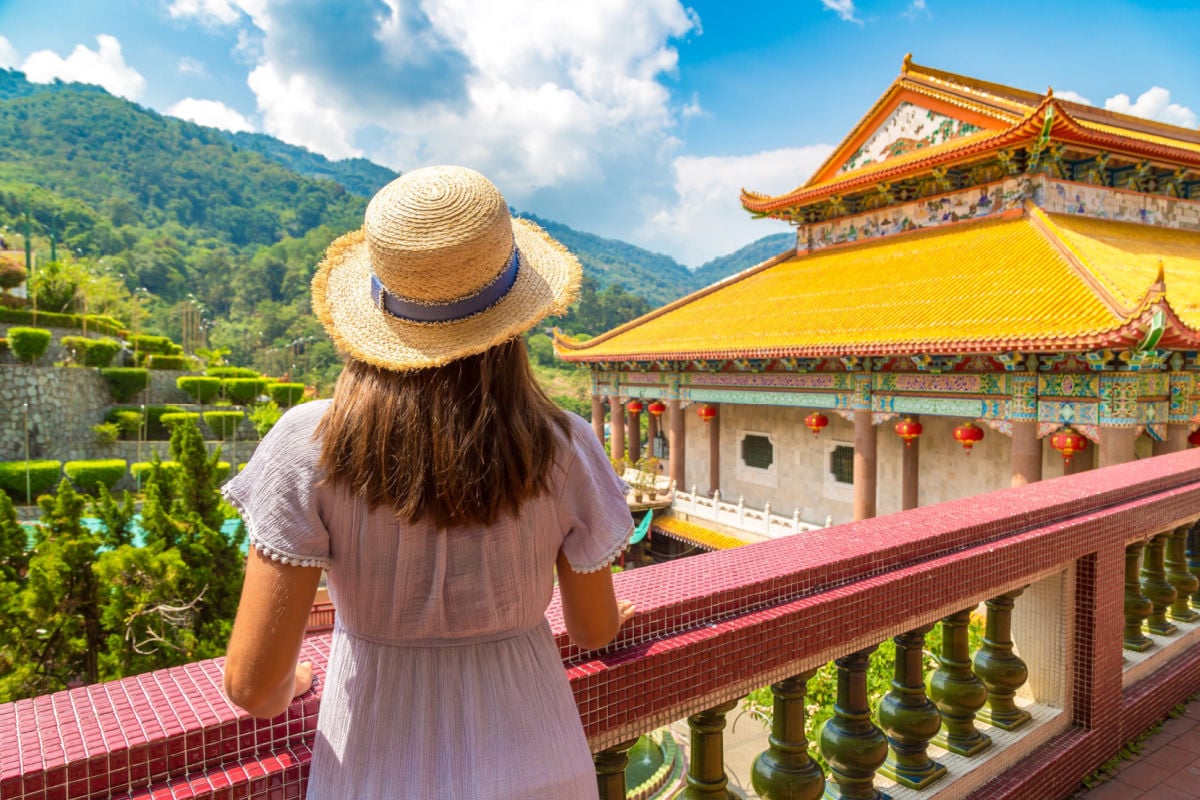[ad_1]
Last Updated
The world capital for backpacking tourism, Southeast Asia (SEA), has a newfound fame as a digital nomad hotspot.
Hardly a shock, seeing that a majority of SEA countries offer low prices and tropical weather, but while it’s not unexpected that Bali, Phuket, or even up-and-coming Vietnam would see a surge in nomads, an unlikely destination is challenging the tried-and-true hotspots for the number one spot.

Forget about the overcrowded beaches, complicated visa rules, and safety concerns: next year, it’s the unheard-of Malaysian Penang where you should be headed.
Penang Is The Next Asian Nomad Hotspot
According to the latest report issued by NomadList, tracking travel trends among digital nomads, Penang, a lesser-known state in Malaysia is currently one of the fastest-growing destinations for this subcategory, overtaking the much more famous Vietnamese Hanoi and Saigon, and even Filipino Manila.
In fact, it is currently the fifth fastest-growing nomad destination worldwide, fenced off from the top four by Tokyo, Da Nang in Vietnam, Seoul in South Korea, and Malaysia’s own capital Kuala Lumpur.
Yet, this begs the question: why is Penang getting so popular?

Penang Is Low-Risk And Well-Equipped
For starters, Malaysia as a whole is one of Southeast Asia’s best-developed and, thus, safest countries.
Unlike its neighbors, it is considered an upper-middle-income country, which means poverty rates are lower, the public sector receives more funding and is thus better equipped, being able to provide citizens and foreign residents alike better services, and safety levels are high.
As for Penang specifically, it has its off-path appeal working in its favor.

Malaysia is an incredibly diverse country, home to peoples of different ethnicities and religions, including Muslim, Buddhist, and Christian, and Penang is often considered Malaysia’s most highly diverse state: not one group holds a demographic majority.
When traveling around Penang, which includes both a large island and a section of the Malay Peninsula, on the mainland, nomads are likely to encounter different cultural manifestations, customs, cuisine, and even languages, making it incredibly exciting to have as a base.
A Beautiful State Capital

George Town, the state capital (located on Penang Island), is not only a ‘Gamma’ level global city of huge economic importance to Malaysia, home to young entrepreneurs and creative hubs but also a vibrant, 700,000-people-strong metropolis and a cultural center.
From the historical, British-built, 18th-century Fort Cornwallis and a picturesque European-style colonial core to the rapidly-developing business district, with its contrasting skyscrapers and fast-paced life, George Town offers long-term residents the best of both worlds.
Extremely well-prepared to host international residents, George Town has a plethora of work-friendly internet cafes and coworking offices for remote workers to pick from, other than being incredibly affordable.

In total, nomads are expected to spend, on average, US$1,164 working remotely from George Town while exploring the wider Penang Island and the state’s mainland territories.
Internet is also ‘fast’ – NomadList reports an average speed of 26Mbps – the temperature is warm, though it can get unbearably humid in the rainy season, safety levels are high, and most importantly, air quality is ‘great’, a rare feat among Southeast Asian cities.
Sitting opposite of Penang Island, on the Penang mainland, the city of Seberang Perai is the state’s largest, as well as Malaysia’s third-largest urban center, but it lacks George Town’s cultural appeal and eclectic architecture.

An Underrated Tourist Destination
We could argue Penang – particularly Penang Island – is one of Malaysia’s most underrated tourist destinations.
The offshore spot has a high concentration of unspoiled maritime reserves, sandy beaches, forested areas, and quaint seaside villages, with the following listed as some of the top points of interest in Penang by TripAdvisor:
- The Tropical Spice Garden, where over 500 plant species can be admired, and visitors can participate in cooking courses
- The Habitat Penang Hill, an ecotourism project where guests can come in close contact with the jungle environment and learn from it
- Batu Ferringhi Beach, a long sandy crescent lapped by azure waters, and a popular swimming spot for locals and tourists alike
- The Batu Ferringhi Night Market, with over 100 food stalls serving traditional Malay, and pan-Asian food
- The Historic Streets of George Town, a UNESCO-protected zone in the state capital where native Southeast Asian and European architecture form a unique townscape
- The Kek Lok Si Temple, simply the largest Buddhist temple in Malaysia, housing as many as 10,000 Buddha statues
- Penang National Park, a peaceful reserve traversed by walking trails, which zig-zag into and out of the jungle, and bordered by the seafront

As if the cultural and natural attractions, the affordability, and the warm weather were not a strong enough draw, Malaysia has its own simplified Digital Nomad Visa, possibly the easiest and least expensive to qualify for in Asia.
How Does The Malaysian DNV Work?
It is dubbed the DE Rantau Pass, and all digital freelancers, IT workers carrying out activities for foreign-based companies, and young entrepreneurs can apply when proving they make at least US$2,000 per month, or around US$24,000 per year.
Other criteria must be met, which you can read in full here.

This visa enables applicants to remain in Malaysia for longer than the usual 90 days granted to tourists.
However, nomads staying in the medium term can still travel to the country bureaucracy-free – depending, of course, on nationality-based requirements.
Americans can stay in Malaysia visa-free for up to 3 months, unlike in other Asian destinations like Vietnam, where they must apply for a visa in advance, or Thailand, where visa-free entry is granted, but the maximum time of permitted stay is 30 days.
This makes not only Penang but the whole of Malaysia incredibly attractive to young digital nomads.
Read More:
Top 5 Travel Insurance Plans Starting At $10 Per Week
How To Easily Earn Points For Free Travel
↓ Join Our Community ↓
The Out Of Town Blogs Community FB group has all the latest reopening news, conversations, and Q&A’s happening daily!

SUBSCRIBE TO OUR LATEST POSTS
Enter your email address to subscribe to Out Of Town Blogs’s latest breaking travel news, straight to your inbox.
This article originally appeared on outoftownblogs.com
Opinions expressed here are the author’s alone, not those of any bank, credit card issuer, hotel, airline, or other entity. This content has not been reviewed, approved or otherwise endorsed by any of the entities included within the post.
[ad_2]
